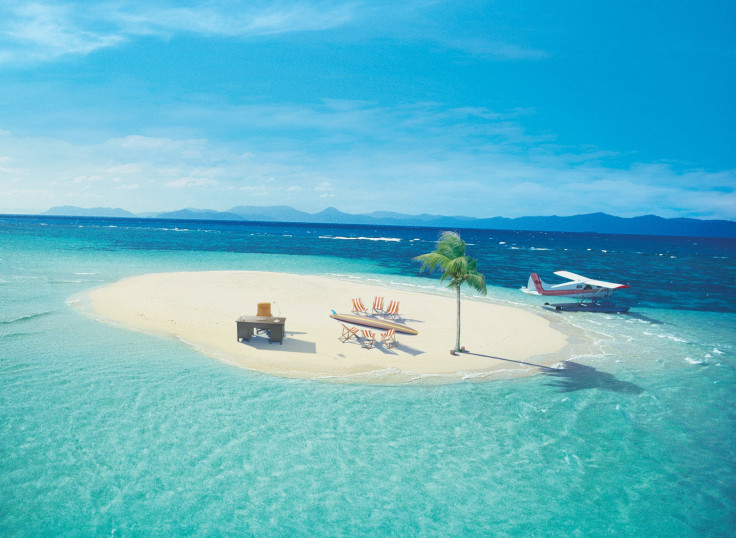‘Best Job In The World’ Receives 250K Applicants In First Week

How’s this for a job description: Get paid A$100,000 ($103,000) to crash parties and festivals in Sydney, work as a lifestyle photographer in Melbourne, taste some of the finest wines in Western Australia or look after wildlife in the Outback, Queensland or South Australia. The so-called “Best Job in the World” has returned, and this time there are not one but six positions available for lucky applicants looking to live out their dream in Australia.
“Unfortunately for me, my time is up, but luckily, for you, the ‘Best Job in the World’ is back," Ben Southall, the Briton who won the 2009 contest, explained in the promotional video (below).
Tourism Queensland’s 2009 campaign for the “Best Job in the World” received an unprecedented amount of international publicity after the tourism board offered one lucky applicant A$150,000 ($154,500) and the chance to be the “caretaker” of a paradisiacal island in the Great Barrier Reef. Southall edged out of some 34,000 applicants from 200 countries as the ultimate winner.
Tourism Queensland figures that for the A$1 million it spent on the campaign, it generated about A$70 million in global publicity in the first month alone and A$200 million overall. Brisbane-based advertising agency CumminsNitro took three top awards that year at the Cannes International Advertising Festival for the campaign, and a documentary about it, produced by the BBC, was the most viewed program in the UK the week it aired.
Now the campaign is back, and it’s six times larger than before.
“We’ve taken one of the most successful tourism campaigns in recent times ... and made it bigger and better by coming up with a competition, which represents the very best of our country -- our breathtaking landscapes and scenery, our unique nature and wildlife, great food and wine, and, of course, our huge sense of fun,” Andrew McEvoy, managing director of Tourism Australia, explained.
In partnership with state and territory tourism affiliates, Tourism Australia is offering six jobs throughout the nation: chief “funster” (New South Wales), lifestyle photographer (Melbourne), Outback adventurer (Northern Territory), park ranger (Queensland), taste master (Western Australia) and wildlife caretaker (South Australia).
The job descriptions include things like “sleep under the stars in a bush camp,” “talk to wallabies and cuddle koalas” or “tour the best restaurants, wineries, breweries, pubs and lobster eateries.” Each position comes with an A$50,000 salary and A$50,000 for living expenses for a six-month commitment.
The A$4 million initiative is part of a major push to promote tourism opportunities offered by Australia’s Working Holiday Maker program, or WHM, in nations such as the UK, Ireland, France, Germany, U.S., Canada, South Korea and Japan.
"The competition provides an excellent platform to entice more young people from around the world to come to Australia to holiday but also to work, helping to fill many unfilled tourism jobs across Australia -- a key challenge for the industry,” McEvoy said. “These are visitors who tend to stay longer, disperse widely and often come back again with their families later in their lives.”
The “youth segment” (18-30 years of age) pumps A$12 billion annually in total tourism spending and delivers more than a quarter of Australia’s international arrivals, according to Tourism Australia. The tourism board figures that each of these travelers spends about A$7,279 per trip in Australia, while the Working Holiday Maker program as a whole contributes A$2.5 billion to the Australian economy.
“Despite recent challenges -- such as the high Australian dollar and the global financial crisis affecting some of Australia's traditional Western markets -- the youth traveler segment remains an important part of Australia's visitor mix,” McEvoy noted.
Tourism Australia Public Affairs Manager Kim Moore confirmed Tuesday that, since the “Best Job In The World” campaign launched last Monday in London, the organization has received more than 250,000 applications (nearly eight times as many as the 2009 campaign) from across the globe. Applicants are each required to submit a 30-second video on the competition website, and the top 150 will appear online shortly after the submission period closes on April 10. The organizers will then fly the top 18 finalists to Australia in June for a final interview before announcing the winners at a media event on June 21.
© Copyright IBTimes 2024. All rights reserved.






















